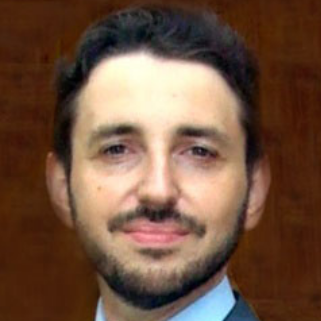International Journal of Information Technology and Computer Science (IJITCS)
IJITCS Vol. 17, No. 4, 8 Aug. 2025
Cover page and Table of Contents: PDF (size: 1092KB)
Mathematics and Software for Coordinated Planning Using Aggregated Linear Volume-time Models of Discrete Manufacturing Systems
PDF (1092KB), PP.1-15
Views: 0 Downloads: 0
Author(s)
Index Terms
Coordinated Planning, Multi-objective Linear Programming, Compromise Criterion, Aggregated Linear Volume-time Model of Discrete Manufacture
Abstract
The problems of managing modern complex organizational and manufacturing systems, such as international production corporations, regional economies, sectoral ministries, etc., in conditions of fierce competition are primarily related to the need to consider the activity of organizational and manufacturing objects that make up a multi-level manufacturing system, that is, the ability to efficiently solve the problem of coordinating interests. This problem cannot be solved efficiently without the use of modern scientific achievements and appropriate software. As an example, we can cite the active systems theory pioneered by Prof. V. M. Burkov and his students, which successfully claims to be a constructive implementation of the idea of coordinated planning. This paper proposes new models and methods of coordinated planning of two-level organizational and manufacturing systems. Our models and methods use original compromise criteria and the corresponding constructive algorithms. The original aggregated volume-time models are used as models of organizational and manufacturing objects. We present a well-founded software structure for the proposed methods of coordinated planning. It contains an intelligent interface for using the presented results in solving applied problems.
Cite This Paper
Alexander Pavlov, Kateryna Lishchuk, Oleg Melnikov, Mykyta Kyselov, Cennuo Hu, "Mathematics and Software for Coordinated Planning Using Aggregated Linear Volume-time Models of Discrete Manufacturing Systems", International Journal of Information Technology and Computer Science(IJITCS), Vol.17, No.4, pp.1-15, 2025. DOI:10.5815/ijitcs.2025.04.01
Reference
[1]Y. Hu, Y. Guan, J. Han, and J. Wen, “Joint Optimization of Production Planning and Capacity Adjustment for Assembly System,” Procedia CIRP, vol. 62, pp. 193–198, 2017, doi: 10.1016/j.procir.2016.06.029.
[2]D. Dhungana, A. Haselböck, S. Meixner, et al., “Multi-factory production planning using edge computing and IIoT platforms,” Journal of Systems and Software, vol. 182, p. 111083, Dec. 2021, doi: 10.1016/j.jss.2021.111083.
[3]V. N. Burkov and V. V. Tsyganov, “Stochastic Mechanisms of the Active Systems Functioning,” IFAC Proceedings Volumes, vol. 19, no. 5, pp. 323–327, May 1986, doi: 10.1016/s1474-6670(17)59817-1.
[4]V. N. Burkov, “Active Systems Theory and Organizational Mechanisms Design,” IFAC Proceedings Volumes, vol. 22, no. 10, pp. 17–22, Aug. 1989, doi: 10.1016/s1474-6670(17)53140-7.
[5]V. P. Avdeev, V. N. Burkov, A. K. Enaleev, and T. V. Kiseliova, “Adaptive Identification in Multichannel Active Systems,” IFAC Proceedings Volumes, vol. 22, no. 16, pp. 337–339, Oct. 1989, doi: 10.1016/s1474-6670(17)53035-9.
[6]V. N. Burkov and A. K. Enaleev, “Stimulation and decision-making in the active system theory,” Mathematical Social Sciences, vol. 27, no. 3, pp. 271–291, Jun. 1994, doi: 10.1016/0165-4896(93)00739-h.
[7]M. Z. Arslanov, “Multiobjective Optimisation and Binary Relations in Active System Theory,” IFAC Proceedings Volumes, vol. 32, no. 2, pp. 6282–6285, Jul. 1999, doi: 10.1016/s1474-6670(17)57072-x.
[8]M. Z. Arslanov, “Skaljarizacija zadachi postroenija mnozhestva optimal'nyh po Slejteru reshenij [Scalarization of the problem of constructing a set of Slater-optimal solutions],” Avtomatika i Telemekhanika vol. 8, pp. 138–144, https://www.mathnet.ru/eng/at2654, 1997 (in Russian).
[9]K. S. Sagyngaliev, S. T. Pachin, and K. K. Sanbayev, “Optimization of Coordinated Control of Active Systems,” Proceedings of the IEEE International Workshop on Intelligent Motion Control, vol. 2, pp. 867–869, doi: 10.1109/imc.1990.687436.
[10]A. A. Pavlov, “Models and Algorithms of Multipurpose Linear Programming,” Journal of Automation and Information Sciences, vol. 52, no. 11, pp. 48–59, 2020, doi: 10.1615/jautomatinfscien.v52.i11.40.
[11]Mangesh P. Joshi, Priya M. Khandekar, "Selection of Health Insurance Policy: Using Analytic Hierarchy Process and Combined Compromised Solution Approach Under Spherical Fuzzy Environment", International Journal of Information Technology and Computer Science, Vol.16, No.5, pp.69-80, 2024.
[12]Julianty Surasma Surung, I Putu Agung Bayupati, Gusti Agung Ayu Putri, "The Implementation Of ERP In Supply Chain Management On Conventional Woven Fabric Business", International Journal of Information Engineering and Electronic Business, Vol.12, No.3, pp. 8-18, 2020.
[13]M. V. Belov and D. A. Novikov, “Setevye aktivnye sistemy: modeli planirovanija i stimulirovanija [Network active systems: planning and incentive models], Control Sciences, no. 1, pp. 47–57, 2018, https://www.mathnet.ru/pu1065 (in Russian).
[14]A. A. Pavlov, M. Ye. Kyselov, B. P. Palekha, “Ahrehovani ob’yemno-chasovi modeli planuvannya dlya odnoho klasu dyskretnykh vyrobnychykh system [Aggregated volume/time planning models for one class of discrete production systems],” Adaptive Systems of Automatic Control, vol. 2, no. 45, pp. 166–174, 2024, doi: 10.20535/1560-8956.45.2024.313149 (in Ukrainian).
[15]Alanoud Alotaibi, Farrukh Nadeem, "A Review of Applications of Linear Programming to Optimize Agricultural Solutions", International Journal of Information Engineering and Electronic Business, Vol.13, No.2, pp. 11-21, 2021.




